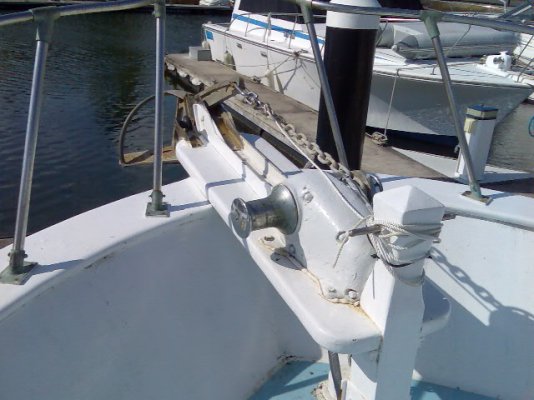kev_rm
Senior Member
sorry this is a stupid question - if I want an all chain rode, i'm looking at my complete guide to anchoring which suggests lashing the bitter end to a structural member in the locker area... but I might actually want to be able to get rid of it from up on deck, and I might also want to get rid of it with a float for later retrieval.. so does having a length (say 100') of some lightweight rope/rode to be able to cut from on deck and if needed attach a float to make sense?




